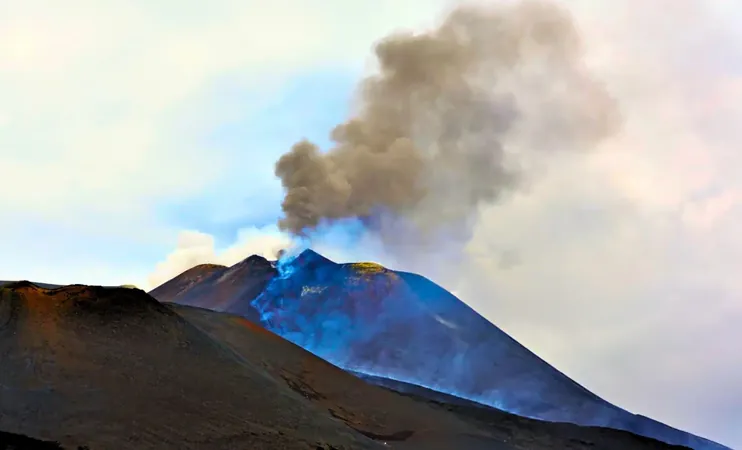
Scientists Sound Alarm as Supervolcano Near Naples Shows Signs of Awakening - Is Global Chaos on the Horizon?
2024-11-24
Author: Ying
Unprecedented Gas Emissions: A Cause for Alarm
Recent research spearheaded by Gianmarco Buono from the Italian National Institute of Geophysics and Volcanology indicates a troubling surge in carbon dioxide emissions from the Solfatara crater. Currently, the area emits between 4,000 and 5,000 tons of CO2 each day—equivalent to the emissions from burning approximately 500,000 gallons of gasoline! Astonishingly, around 80% of this gas is believed to be coming from magma lying beneath the surface, while the remaining emissions stem from reactions involving hot subterranean fluids and calcite-rich rock formations.
The implications of these accelerating emissions are profound. Scientists are racing against time to determine if this activity signals that magma is moving closer to the Earth’s surface, a possibility that could have catastrophic implications.
The Hidden Dangers of Supervolcanoes
Supervolcanoes like the Phlegraean Fields possess the potential to unleash cataclysmic eruptions thousands of times more powerful than typical volcanic events. A massive eruption could produce ash clouds that blanket the planet, leading to devastating climate changes and agricultural collapse globally. The last major eruption from the Phlegraean Fields occurred around 40,000 years ago, a reminder of the area's terrifying past and its potential to erupt catastrophically once again.
Alongside the alarming gas emissions, the Phlegraean Fields area has also been experiencing increased seismic activity and ground deformation. These indicators suggest significant moving parts underground, reinforcing the fears of experts who noted heightened activity levels in this region since 2005. In fact, in 2012, authorities raised the volcanic alert status from green to yellow, acknowledging a more elevated risk.
Preparedness in the Face of Uncertainty
Experts stress the critical importance of understanding the differences between gas emissions attributed to active magma movements and those resulting from natural geological reactions. Grasping this distinction could prove vital—determining whether current volcanic signs are mere natural phenomena or indicators of a looming disaster, thereby influencing crucial decisions regarding evacuation and public safety.
The Phlegraean Fields serve as a stark reminder of our planet's unpredictable nature. While not every sign of volcanic activity culminates in disaster, the stakes are existentially high, and the world remains on edge. Are we witnessing the onset of another catastrophic eruption, or will this active crater return to its dormant state? As scientists continue to monitor this unfolding situation, one thing is clear: time is not on our side. Stay tuned to stay informed about the developments concerning this threatening geological beast!






 Brasil (PT)
Brasil (PT)
 Canada (EN)
Canada (EN)
 Chile (ES)
Chile (ES)
 España (ES)
España (ES)
 France (FR)
France (FR)
 Hong Kong (EN)
Hong Kong (EN)
 Italia (IT)
Italia (IT)
 日本 (JA)
日本 (JA)
 Magyarország (HU)
Magyarország (HU)
 Norge (NO)
Norge (NO)
 Polska (PL)
Polska (PL)
 Schweiz (DE)
Schweiz (DE)
 Singapore (EN)
Singapore (EN)
 Sverige (SV)
Sverige (SV)
 Suomi (FI)
Suomi (FI)
 Türkiye (TR)
Türkiye (TR)